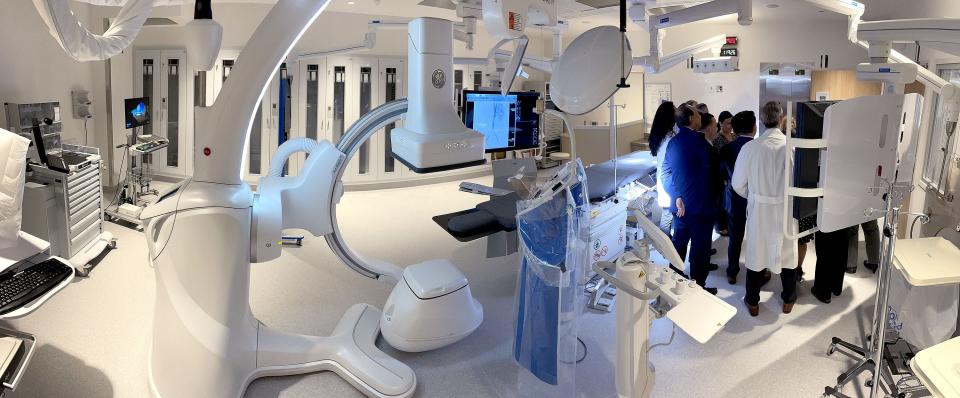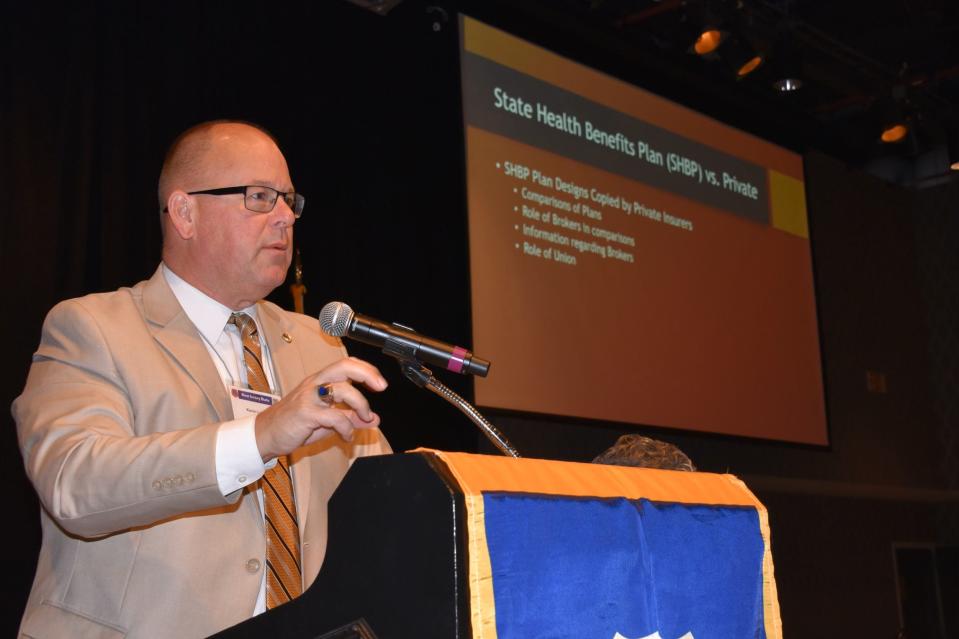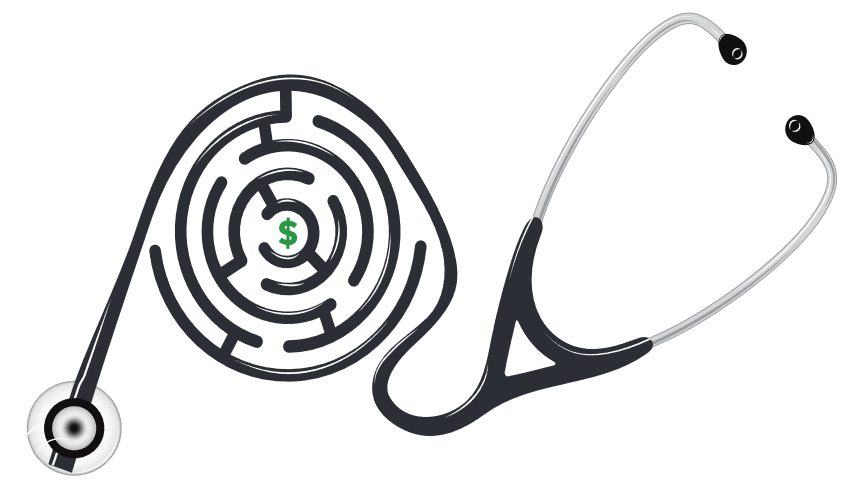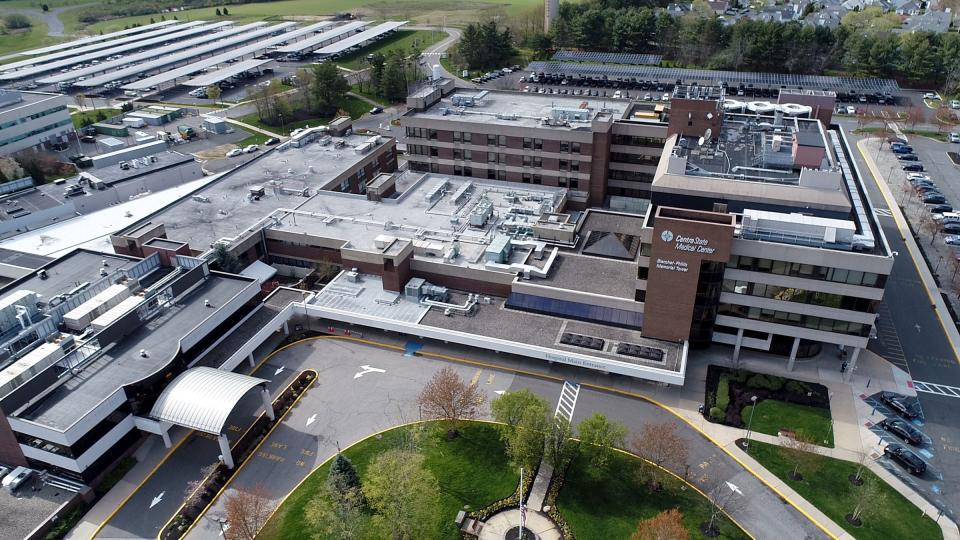Shore-area hospital price lists shrouded in secrecy, leaving consumers flying blind
Kevin Lyons was in a bind.
The director of member benefits for the New Jersey State Policemen's Benevolent Association, Lyons was representing a police officer who had been diagnosed with a brain tumor and was trying to convince the health benefits commission to approve a new treatment that had fewer side effects than the traditional one.

The commission needed to decide: Did the benefits of the new therapy outweigh the cost? The police officer's oncologist said the new treatment would be the best course of treatment. But Lyons was having a tough time advocating for his member; there was no way to find out how much the procedure would cost.
"We don't even know what the cost differential is," Lyons said. "All these costs are shrouded in secrecy."
Lyons isn't alone. Consumers and employers had hoped to take advantage of a federal rule requiring hospitals to publicly post their prices for items and services so that they could shop for the best value. Instead, they are drowning in spreadsheets with data that they say is a burden to decipher.
Rather than a Travelocity-style app that would allow consumers to compare medical procedure prices as they would airline fares, the hospitals' "price transparency files" open a window to a convoluted economic system, chock-full of medical jargon, insurance codes and prices.
Advocates say the industry's slow adoption of federal transparency rules deprives consumers and employers of key information that could help them slow the rising cost of health care. Nationwide, a family with insurance through their employer will pay on average nearly $24,000 in premiums in 2024, up 7% from 2023, according to Kaiser Family Foundation, a research group. That figure doesn't include out-of-pocket costs like co-pays and deductibles.
"I think one of the reasons that hospitals have been so reluctant to make this information readily accessible is because they know that once they show that, people are going to start to ask questions," said Christin Deacon, a consultant who oversaw the health plan for New Jersey state employees from 2018 to 2021. "Well, how can something cost this payer $100 and cost this payer $10,000? Where's the logic in there? And it really throws into question the whole system."

Lyons has seen − or, at least, tried to see − the system up close. A retired Long Beach Township detective, he has been on the state's health benefits design committee for more than a decade, helping decide which services should be covered by the state employees' health plan, along with the members' out-of-pocket costs.
During his time on the committee, Lyons said, health care costs have soared, and employees have taken on a greater share, paying as much as 35% of their insurance premiums out of pocket, putting more pressure on the benefits committee to find ways to keep costs in check.
But as Lyons and the committee search for the best value, he said, they are hamstrung. There is no shortage of data looking at hospitals' quality. But they can't find prices.
"The fact that the state health benefit plan has 800,000 lives, and we can't drive the market? It just doesn't make sense," Lyons said. "We should be able to know what we're paying different hospitals for different (procedures)."
Consumers flying blind
Health care occupies a unique corner of America's capitalistic economic system. Consumers buying groceries or gasoline know the price before they purchase it, giving them a chance to shop around and forcing retailers to compete. But when it comes to health care, consumers typically don't know how much the service costs until after they are treated, when the bill with an explanation of their benefits arrives.
The industry has other anomalies that set it apart from other professional services. Consumers are usually restricted on where to go for care by their insurance plans' networks. They often don't have the choice to walk away if the service is too expensive since their health is at stake. And if they have insurance, it isn't on the hook for the entire bill, at least until after they meet their deductible.

As U.S. health care costs have reached $4.5 trillion, accounting for more than 17% of the economy, the Trump and Biden administrations have supported price transparency, introducing a free-market principle to the system in a bid to give consumers more bargaining power.
Hospitals nationwide have been required since January 2021 by Centers for Medicare and Medicaid Services to post on their websites gross prices, cash discounts, and charges negotiated with insurers for all items and services they provide. The data needs to be both in a machine-readable file and in a consumer-friendly list. And it needs to include some 300 services that patients can shop for in advance. Hospitals that don't comply can face fines.
The goal: Employers that design insurance plans could take those costs into account. Technology companies could crunch numbers and come up with an app like GasBuddy.com or Hotels.com so consumers to see prices side-by-side. And consumers could look at the data to search for the best price, for example, for a knee replacement or colonoscopy.
But researchers said hospitals nationwide have released a variety of data in a variety of formats, making shopping for health care by price relatively futile.
"From a consumer's perspective, what hospitals are supposed to post is, like, the bundle of everything that goes into a colonoscopy and what that would cost," said Krutika Amin, a researcher with the Kaiser Family Foundation in San Francisco. "That's not really how this has played out."
As of last April, CMS had issued more than 730 warning notices to hospitals that were noncompliant, 269 requests for corrective actions, and four fines. The warning notices and corrective action requests aren't public. The fines are public, and none of the hospitals that were fined are in New Jersey.
Shopping for a new hip
Consumer groups are trying to turn up the pressure. PatientRightsAdvocates.org recently launched a website aggregating the price transparency files of some 6,000 hospitals nationwide, including the nine in Monmouth and Ocean counties.
The Asbury Park Press reviewed the Shore-area hospitals and found consumers would need to be well-versed in Microsoft Excel and medical-speak to make use of the data.

Of the Shore-area hospitals, CentraState Medical Center in Freehold Township appears to be most consumer-friendly. The hospital, owned by Atlantic Health System, has an easy-to-navigate website that shows how the data can be useful. (Go to the hospital's home page, scroll to the bottom, click "Cost & Estimates," then click on "Price Transparency.")
One benefit? Patients can compare the price difference between paying with insurance or cash.
For example, say you need a chest X-ray and are covered by Horizon Blue Cross Blue Shield, New Jersey's biggest insurer. CentraState's website shows the service costs $108 if you pay cash. Meanwhile, the hospital has negotiated a rate of $230 for the same service with Horizon. If you haven't reached your deductible, you might save $122 if you pay in cash.
You would have a tougher time, however, comparing prices at CentraState with other hospitals in the region.
Take RWJBarnabas Health's three Shore-area hospitals − Monmouth Medical Center in Long Branch, Monmouth Medical Center Southern Campus in Lakewood and Community Medical Center in Toms River. They make available on their websites what's called a "chargemaster," a spreadsheet listing the gross prices on more than 60,000 items, along with negotiated prices for 16 insurance plans.
The prices are the same, no matter the hospital or the insurer. But they would mean little to someone who doesn't work in health care. To pick an item at random: A "Screw Bone 38Mm Nonsterile Cortex 3.5Mm" lists a gross price of $405 at all three hospitals and a negotiated price of $202.50 for each plan.
Another spreadsheet shows costs for common procedures at each hospital. One example: "Respiratory infections and inflammations with MCC," meaning multiple chronic conditions. It costs $113,098 at Monmouth Medical Center Southern Campus; $94,703 at Community Medical Center; and $93,085 at Monmouth Medical Center. The hospitals, however, don't include information in that database about what insurance carriers pay for the procedures.
A third spreadsheet lays out some 300 shoppable services, along with the gross prices and negotiated rates with 16 insurance plans. Many of the services are listed in medical terminology rather than plain English.
A spokesman for Community Medical Center said: “RWJBarnabas Health provides consumers with publicly accessible information about our hospitals’ items, services, standard charges, and associated costs for services. Some of these services have consistent standard charges across various RWJBarnabas Health hospitals and insurers. There are also many services where standard charges may vary across hospitals and insurers, such as the case with services like major joint replacement surgery, certain diagnostic laboratory and imaging services, and colonoscopy procedures. As these pricing transparency requirements and standards continue to evolve, we will work towards continued compliance."
Three other Shore-area hospitals have chargemasters with potentially usable data. Jersey Shore University Medical Center, Bayshore Medical Center and Southern Ocean Medical Center, which are owned by Edison-based Hackensack Meridian, provide prices for about two dozen common procedures.
The Press looked at the cost of major hip or knee joint replacement for patients without comorbidities. Among the findings:
Different hospitals, different prices. The procedure is listed at $73,719 at Southern Ocean, $60,090 at Jersey Shore and $55,156 at Bayshore.
Different insurance companies, different prices. At Jersey Shore, the negotiated rate for the procedure for non-Medicare plans ranges from $43,020 at Cigna to $63,518 at UnitedHealthcare, the later of which is more than the gross price. A UnitedHealthcare spokesperson didn't address the higher negotiated price, but said: "We have long supported cost transparency that helps consumers understand the cost of care and make informed decisions where to get that care. While the hospital transparency rule requires hospitals to list rates for care services, this data is not consistent across facilities and health services, so does not enable apples-to-apples comparisons of cost and care. Individuals pay significantly less when they use their health benefits to receive care, especially with in-network care providers, which is why we encourage our members to use UnitedHealthcare’s cost estimator tool."
Same insurance company, different hospitals, different prices. One plan offered by Horizon Blue Cross Blue Shield has negotiated rates for the procedure of $32,260 at Bayshore, $33,313 at Southern Ocean, and $45,941 at Jersey Shore.
Commercial insurance plan, Medicare Advantage plan, different prices. Medicare Advantage plans, which generally cover people ages 65 and older, have negotiated rates that are typically at least half the price of commercial plans. For instance, while a Horizon commercial plan has a negotiated rate for the procedure of $32,260 at Bayshore, its Medicare Advantage plan, called Braven, has a negotiated rate of $13,497.
Hackensack Meridian provides a cost estimate calculator on its website, but it requires patients to enter their insurance information. The Press was unable to find the cost of a hip and knee replacement at two other local hospitals owned by Hackensack Meridian: Ocean University Medical Center in Brick, and Riverview Medical Center in Red Bank.
"We are committed to providing the best possible care for our patients," a Hackensack Meridian spokesperson said in an email. "We cannot verify the accuracy of the data on this (PatientRightsAdvocates) site. We recommend patients use our website for estimates. All fees and costs provided are best estimates. A patient's final bill may vary higher or lower as we cannot anticipate all the charges that may be incurred during treatment and their insurance policy specifics. There are many variables in providing the best care including length of time spent in surgery or recovery, specific equipment used, additional tests ordered by a physician, and any specialized care needed or complications that occur in the course of treatment."
The spreadsheets show gross prices that the New Jersey Hospital Association, a trade group, says are the result of a "broken and complex system" that evolved as hospitals attempted to make up for payers like Medicare and Medicaid that reimburse less than the services cost.
Researchers at PatientsRightsAdvocates.org said they are frustrated by the lack of easy-to-use data. The group last summer looked at 29 New Jersey hospitals and found 41% complied with the CMS rule.
Once more transparent data is available, "we're going to start unleashing competition," said Ilaria Santangelo, director of research for PatientsRightsAdvocates. "We're going to be able to see these price variations. People are going to have more ability to shop, meaningfully, than we have now, when we're still kind of in the dark and data is really hard to access."
The push for more transparency
It isn't clear how much consumers would shop for health care services, even if they had all of the prices at their fingertips. After all, most people seeking doctors on Facebook seem to be more interested in quality than price.
But in New Jersey, several unions have called on state lawmakers to enact their own price transparency law. And experts said the state already has the chance to take advantage of data analysis.
New Jersey contracted with RAND, a research group, to look at state employees' insurance claims data from 2016 to 2018, and it found New Jersey taxpayers paid 228% more than Medicare would have paid for the same services at the same facilities, with some hospitals getting higher rates than others.

"You can see the range, the significant range, in pricing and payments to these hospitals," said Linda Schwimmer, president and chief executive officer of the New Jersey Health Care Quality Institute, an advocacy group. "That's where there has been a lot of variation and where there could be a lot of savings."
Policymakers are pressing forward, seeking more transparency.
Centers for Medicare and Medicaid Services will require hospitals to use a standardized template starting in July 2024 that could make the data easier for consumers to navigate.
And the U.S. House of Representatives in December approved a bill, 320-71, that would codify the CMS regulations into law and expand transparency rules beyond hospitals to include laboratories, pharmacy benefit managers, insurance companies, labs, imaging providers and ambulatory surgical centers. The bill still needs to be voted on by the Senate.
"We want to make it so (prices are) easily found," Rep. Frank Pallone, D-N.J., the ranking member of the House Energy and Commerce Committee, said in an interview. "If it's on the website, it has to be something that people can understand."
For now, consumers and employers continue to rely on their insurers to negotiate the best price − and find out the result when they get the bill.
It means payers like Kevin Lyons' PBA are "blind" when they are trying to design benefit packages for their employees, said Christin Deacon, New Jersey's former director of health benefits.
"I think for a long time, employers have been signing on the dotted line when their broker or consultant puts a renewal in front of them, and they say, 'Look, Aetna is your best choice or United has the best rates, Horizon Blue Cross Blue Shield has the greatest discount,'" she said. "And you didn't have a way to verify that. You kind of had to take it on faith. And we see, year after year, 5%, 8%, this past year 15%, renewal increases, and we keep asking, why is health care so expensive?"
Michael L. Diamond is a business reporter who has been writing about the New Jersey economy and health care industry for more than 20 years. He can be reached at mdiamond@gannettnj.com.
This article originally appeared on Asbury Park Press: Despite federal rule, hospital price lists still shrouded in secrecy for consumers

